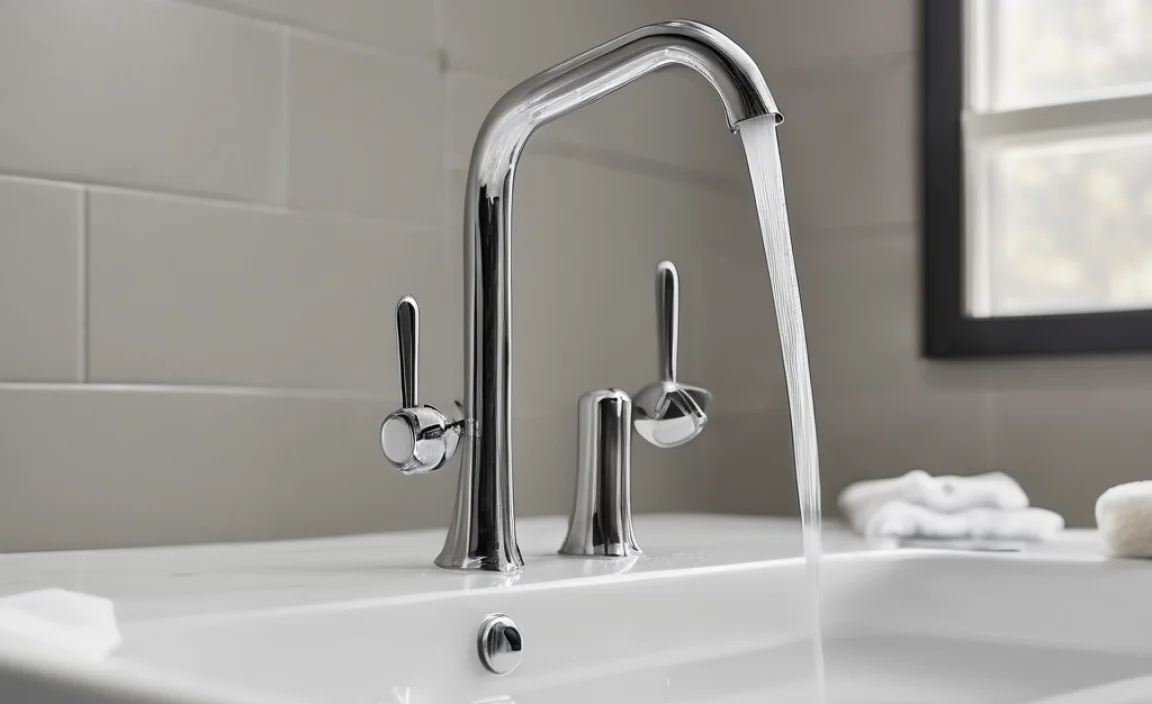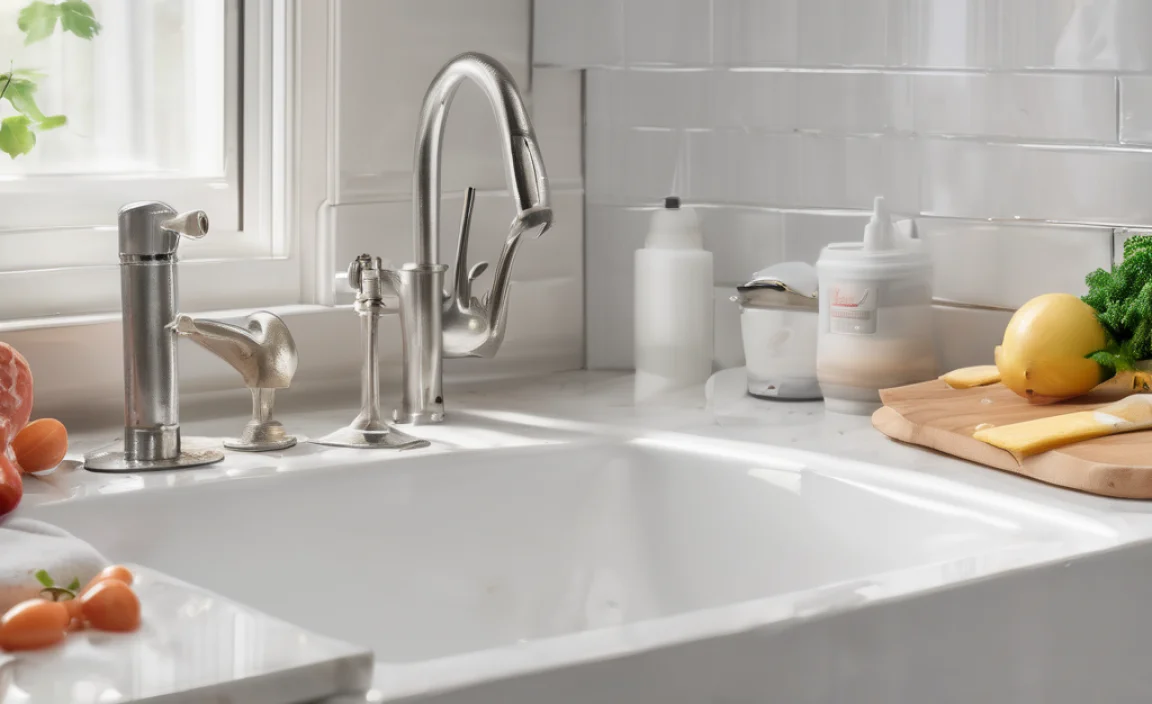Quick Summary: Yes, toilet paper rolls are usually recyclable! They’re made from paper, so they can go in your recycling bin with other paper products. Just flatten them first to save space. But, if the roll is soiled or contaminated, toss it in the trash. Easy peasy!
Ever stood in your bathroom, empty toilet paper roll in hand, wondering if it can be recycled? You’re not alone! It’s a common question, and sorting out what goes where can be confusing. Recycling rules change from place to place, too. But don’t worry, we’ll walk through everything step by step.
In this article, we’ll cover how to recycle those cardboard tubes the right way. We’ll also look at what to do if they can’t be recycled and fun ways to reuse them. Get ready to make a small change that can make a big difference!
Are Toilet Paper Rolls Recyclable?
Good news! In most cases, toilet paper rolls are recyclable. They are typically made from paper fibers, which can be broken down and reused to create new paper products. However, there are a few things to keep in mind to ensure they actually get recycled.
Why Recycle Toilet Paper Rolls?
Recycling toilet paper rolls is a small act that can have a significant environmental impact. Here’s why it’s a good idea:
- Reduces Landfill Waste: Paper products take up a lot of space in landfills. By recycling, you help reduce the amount of waste sent to landfills.
- Conserves Resources: Recycling paper reduces the need to harvest trees to make new paper products.
- Saves Energy: It takes less energy to recycle paper than to produce it from raw materials.
- Lowers Greenhouse Gas Emissions: Manufacturing new paper releases greenhouse gases. Recycling helps lower these emissions.
How to Recycle Toilet Paper Rolls: A Step-by-Step Guide
Follow these simple steps to ensure your toilet paper rolls are properly recycled:
Step 1: Check Local Recycling Guidelines
First, check your local recycling guidelines. Recycling programs vary from city to city, and some may have specific rules about paper products. You can usually find this information on your city’s website or by calling your local waste management company.
Step 2: Remove Any Contamination
Make sure the toilet paper roll is clean and dry. If it’s soiled or contaminated with anything, it can’t be recycled. Throw contaminated rolls in the trash.
Step 3: Flatten the Roll
Flatten the toilet paper roll to save space in your recycling bin. This also makes it easier for recycling facilities to process them.
Step 4: Place in Recycling Bin
Place the flattened toilet paper roll in your recycling bin with other recyclable paper products like newspapers, magazines, and cardboard.
Step 5: Stay Informed
Keep up-to-date with any changes in your local recycling program. Recycling rules can change, so it’s good to stay informed.
When Can’t You Recycle Toilet Paper Rolls?
Even though toilet paper rolls are generally recyclable, there are situations where they can’t be recycled. Here are some common reasons:
- Contamination: If the roll is soiled with bodily fluids, grease, or other substances, it can’t be recycled. Contamination can ruin an entire batch of recyclables.
- Wetness: Wet paper is difficult to recycle. If the roll is damp or wet, it’s best to throw it in the trash.
- Mixed Materials: If the toilet paper roll has non-paper attachments, like plastic or foil, remove them before recycling. If you can’t remove them, toss it in the trash.
- Local Restrictions: Some recycling programs don’t accept certain types of paper. Always check your local guidelines.
What Are Toilet Paper Rolls Made Of?
Toilet paper rolls are typically made from various types of paper. Understanding the composition can help you make informed decisions about recycling and reusing them.
Types of Paper Used
- Virgin Paper: Some toilet paper rolls are made from virgin paper, which comes directly from trees. These rolls are usually recyclable, but using recycled content is more sustainable.
- Recycled Paper: Many toilet paper rolls are made from recycled paper fibers. These are the most eco-friendly option since they reduce the demand for virgin paper.
- Mixed Paper: Some rolls may contain a mix of virgin and recycled paper fibers.
Manufacturing Process
The manufacturing process for toilet paper rolls typically involves:
- Pulping: Paper fibers are mixed with water to create a pulp.
- Forming: The pulp is spread out and formed into a thin sheet.
- Drying: The sheet is dried and rolled into a large roll.
- Cutting: The large roll is cut into individual toilet paper rolls.
- Packaging: The rolls are packaged for sale.
Creative Ways to Reuse Toilet Paper Rolls
Instead of just recycling your toilet paper rolls, why not get creative and reuse them? Here are some fun and practical ideas:
Craft Projects for Kids
Toilet paper rolls are perfect for kids’ crafts. Here are a few ideas:
- Animals: Create animal figures like cats, dogs, or birds by painting and adding construction paper features.
- Cars and Trucks: Make toy cars and trucks by adding wheels and decorating the rolls.
- Buildings: Build miniature buildings or castles using multiple rolls.
- Holiday Decorations: Create ornaments, garlands, or other holiday decorations.
Gardening
Toilet paper rolls can be very useful in the garden:
- Seed Starters: Use them as biodegradable seed starters. Plant the entire roll in the ground when the seedling is ready.
- Plant Protection: Protect young plants from pests by placing a toilet paper roll around the stem.
- Composting: Cut them into small pieces and add them to your compost bin. They’ll break down and add carbon to your compost.
Organization
Use toilet paper rolls to organize items around your home:
- Cord Organizer: Store cords and cables neatly by placing them inside toilet paper rolls.
- Pencil Holder: Decorate and use them as pencil holders on your desk.
- Gift Wrap Organizer: Keep gift wrap rolls from unraveling by slipping a toilet paper roll over them.
Home Decor
Get crafty and use toilet paper rolls to create unique home decor items:
- Wall Art: Cut the rolls into small pieces, shape them into designs, and glue them together to create wall art.
- Mirror Frames: Decorate a mirror frame by gluing small pieces of toilet paper rolls around the edges.
- Storage Containers: Cover the rolls with fabric or paper and use them as decorative storage containers.
Recycling Symbols and What They Mean
Understanding recycling symbols can help you make better decisions about what to recycle. Here are some common symbols you might see on paper products:
| Symbol | Meaning |
|---|---|
 |
The universal recycling symbol indicates that the product can be recycled. |
 |
This symbol indicates that the product is made from recycled paper. The percentage inside the symbol shows how much of the product is made from recycled content. |
 |
The Forest Stewardship Council (FSC) symbol indicates that the paper comes from responsibly managed forests. |
Impact of Recycling on the Environment
Recycling has numerous positive effects on the environment. By recycling toilet paper rolls and other paper products, you can contribute to a more sustainable future.
Benefits of Recycling
- Reduces Deforestation: Recycling paper reduces the need to cut down trees, helping to preserve forests.
- Conserves Water: Paper production requires a lot of water. Recycling paper reduces water consumption.
- Decreases Pollution: Recycling reduces air and water pollution associated with manufacturing new paper products.
- Saves Energy: Recycling uses less energy than producing paper from raw materials.
- Lowers Landfill Waste: Recycling diverts waste from landfills, extending their lifespan and reducing methane emissions.
Environmental Statistics
Here are some statistics that highlight the impact of recycling:
| Statistic | Impact |
|---|---|
| Recycling one ton of paper | Saves 17 trees, 7,000 gallons of water, and 4,100 kilowatt-hours of energy. |
| Recycling reduces greenhouse gas emissions | Equivalent to taking millions of cars off the road. |
| The average person generates over 4 pounds of waste per day | Recycling can significantly reduce this amount. |
Common Mistakes to Avoid When Recycling Paper Products
To ensure your recycling efforts are effective, avoid these common mistakes:
- Recycling Contaminated Items: Food residue, liquids, and other contaminants can ruin an entire batch of recyclables. Always clean items before recycling them.
- Recycling Wet Paper: Wet paper is difficult to process. Keep paper products dry before placing them in the recycling bin.
- Not Flattening Cardboard: Flattening cardboard boxes and toilet paper rolls saves space and makes them easier to process.
- Ignoring Local Guidelines: Recycling programs vary from place to place. Always check your local guidelines to ensure you’re recycling correctly.
- Putting Non-Recyclable Items in the Recycling Bin: Items like plastic bags, Styrofoam, and certain types of plastic can contaminate the recycling stream.
Alternatives to Traditional Toilet Paper
If you’re looking to reduce your environmental impact even further, consider these alternatives to traditional toilet paper:
- Bidet: Bidets use water to clean, reducing or eliminating the need for toilet paper.
- Reusable Cloth Wipes: Use soft cloth wipes instead of toilet paper. Wash and reuse them.
- Bamboo Toilet Paper: Bamboo is a fast-growing, sustainable resource. Bamboo toilet paper is a more eco-friendly option.
- Recycled Toilet Paper: Choose toilet paper made from 100% recycled content.
Finding Recycling Programs Near You
Locating recycling programs in your area is easier than you might think. Here are some resources to help you find local recycling options:
- Local Government Websites: Check your city or county’s website for information on recycling programs, drop-off locations, and guidelines.
- Waste Management Company Websites: Visit the website of your local waste management company for recycling information.
- Earth911: Use the Earth911 website ( https://earth911.com/ ) to find recycling centers and learn about local recycling programs.
- Call2Recycle: Call2Recycle ( https://www.call2recycle.org/ ) provides information on recycling batteries and other electronic waste.
FAQ About Recycling Toilet Paper Rolls
1. Can I recycle toilet paper rolls if they have a little bit of tape on them?
Small amounts of tape are usually okay, but it’s best to remove as much as possible. Big pieces of tape can interfere with the recycling process.
2. What if my toilet paper roll gets wet?
Wet toilet paper rolls are hard to recycle. It’s better to throw them in the trash if they get soaked.
3. Are all cardboard tubes recyclable?
Most cardboard tubes, like those from paper towels, are recyclable. Just make sure they are clean and dry.
4. Can I recycle the cardboard packaging that the toilet paper comes in?
Yes, the cardboard packaging is usually recyclable. Flatten it to save space in your recycling bin.
5. What happens to toilet paper rolls after they are recycled?
Recycled toilet paper rolls are often turned into new paper products like cardboard, paper towels, or even new toilet paper rolls!
6. Is it better to compost toilet paper rolls instead of recycling them?
Composting is a great option if you have a compost bin. Just make sure to tear the rolls into small pieces first to help them break down faster.
7. How can I encourage my family to recycle toilet paper rolls?
Make it easy by placing a recycling bin in the bathroom. Also, explain the benefits of recycling to your family to get everyone on board.
Conclusion
So, are toilet paper rolls recyclable? Absolutely! By following a few simple steps, you can ensure that these everyday items are properly recycled, reducing waste and helping the environment. Remember to check your local recycling guidelines, keep the rolls clean and dry, and flatten them to save space. And if you’re feeling creative, try reusing them for crafts, gardening, or organization projects. Every small effort counts towards a more sustainable future. Keep up the great work, and happy recycling!


